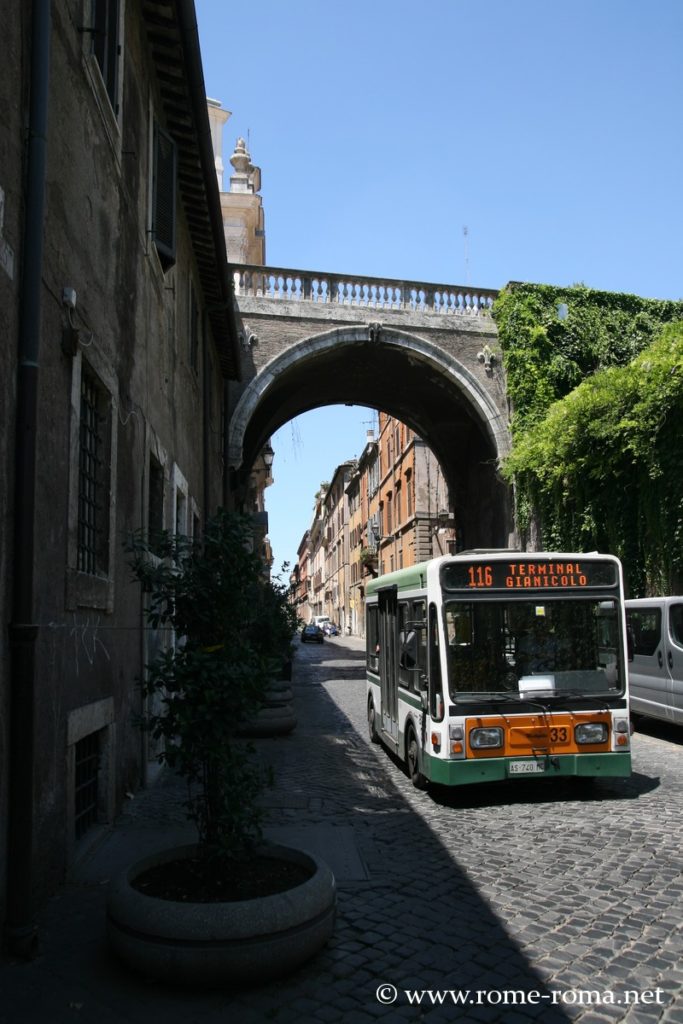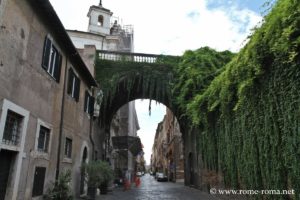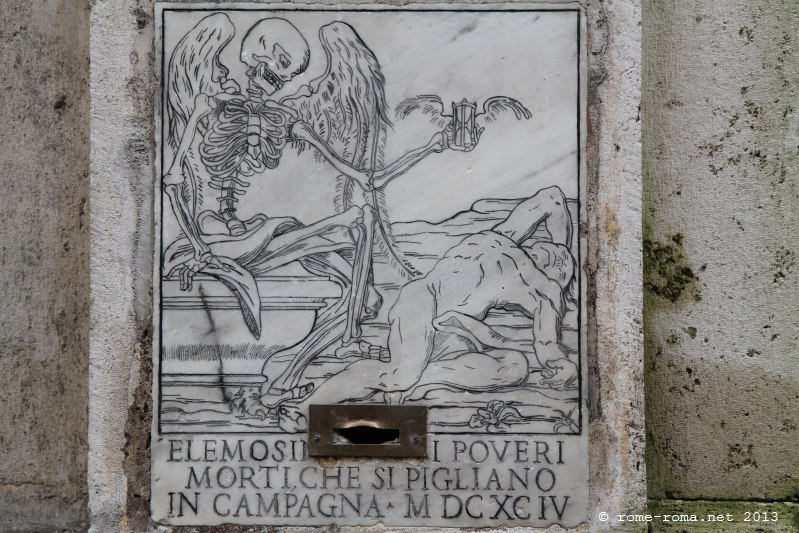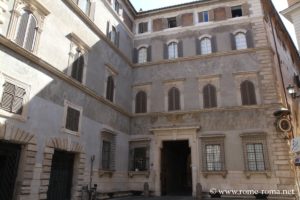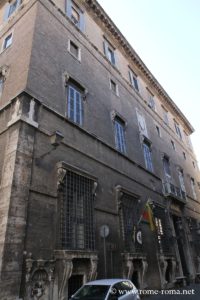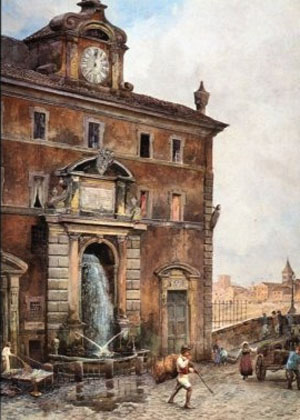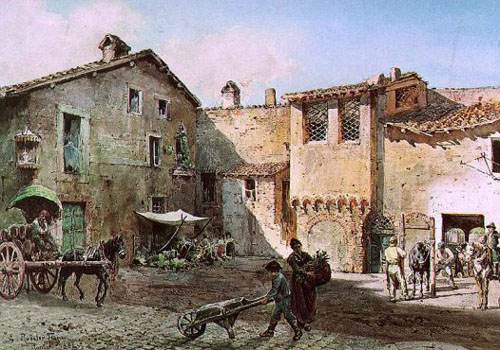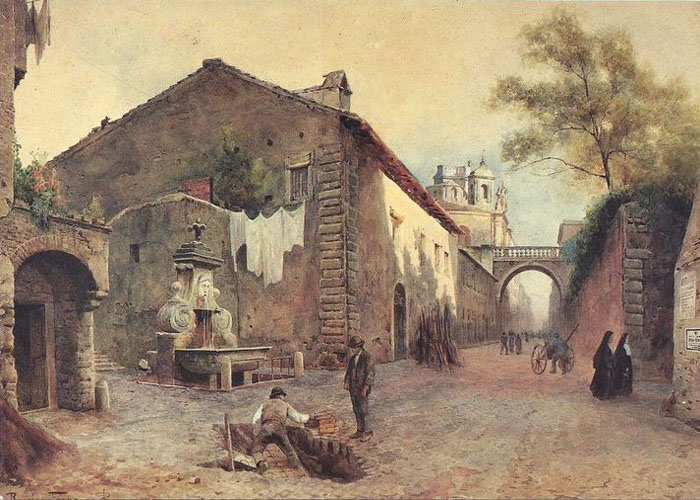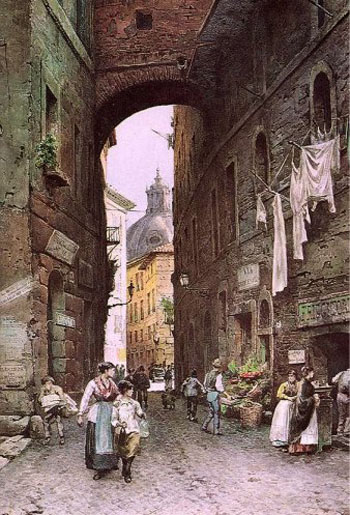Via Giulia, almost one kilometer long, is one of the oldest streets in Rome, of great historical and architectural importance. It was known as Via Magistralis (main street in Italian) in the Middle Ages, later redesigned at the beginning of the 16th century on the initiative of Pope Julius II and named after him. The street was also called Via Recta (straight street in Italian).
Parallel to the bank of the Tiber, it connects Piazza San Vincenzo Pallotti near Ponte Sisto to Piazza dell’Oro and the Church of San Giovanni dei Fiorentini, crossing the two historic districts of Regola and Ponte.
The street is lined with numerous Renaissance and Baroque palaces and churches, when it was much more lively. But in the 18th century, the nobility gradually moved towards the Campo Marzio, followed by various activities and trades. Thus, Via Giulia fell into a certain torpor, which still persists today.
Historical Overview
In the Middle Ages, the street was winding and muddy, called via Magistralis (lit. main street), as it was a busy thoroughfare allowing passage through the winding districts parallel to the Tiber.
In the 15th century, it was called via Mercatoria, linking the markets of Campo de’ Fiori and Piazza Navona at one end, to the fish market at the other end on Piazza di Ponte Sant’Angelo.
In 1478, Sixtus IV della Rovere laid out an urban redevelopment plan for Rome, but the renovation of this street was postponed. It was Julius II della Rovere who in 1508 planned this new straight thoroughfare, employing the talents of builder Donato Bramante, creating the longest street in Rome, then also designated via Recta (straight street in French). This was the first major urban project of the Renaissance popes. Julius II bequeathed his name to it. One of his objectives, beyond of course the prestige of the Church, was to establish there an administrative and financial center close to the Vatican.
During the Renaissance, via Giulia became one of the main centers of life in the city, where the great families of Rome settled, such as the Sacchetti, the Chigi, and the Ricci, often of Florentine origin, with several “national” churches of foreign countries or Italian cities (Armenia, Spain, Florence, Naples, etc.) built in the vicinity. Prestigious architects left their architectural mark here and sometimes established themselves along the street, such as Raphael or Antonio da Sangallo the Younger. Moreover, the street was regularly enlivened with parades, tournaments, horse races, and festivities.
Construction continued in the Baroque period with great architects such as Francesco Borromini, Carlo Maderno, and Giacomo della Porta.
In the 18th century, preferring the Campo Marzio, the nobility deserted the district, as they had in the Borgo, leading to the settlement of craftsmen and workshops. Since that time, the street has acquired its character of solemn solitude, even more true today with the low tourist flow and the disappearance of artisans.
During the construction of the embankments of the Tiber at the end of the 19th century, the houses along the river were demolished, and several palaces facing the street were remodeled or destroyed, such as the vanished Hospice of the Hundred Brothers, against which the present fountain once leaned before being relocated to the other side of the Tiber on Piazza Trilussa.
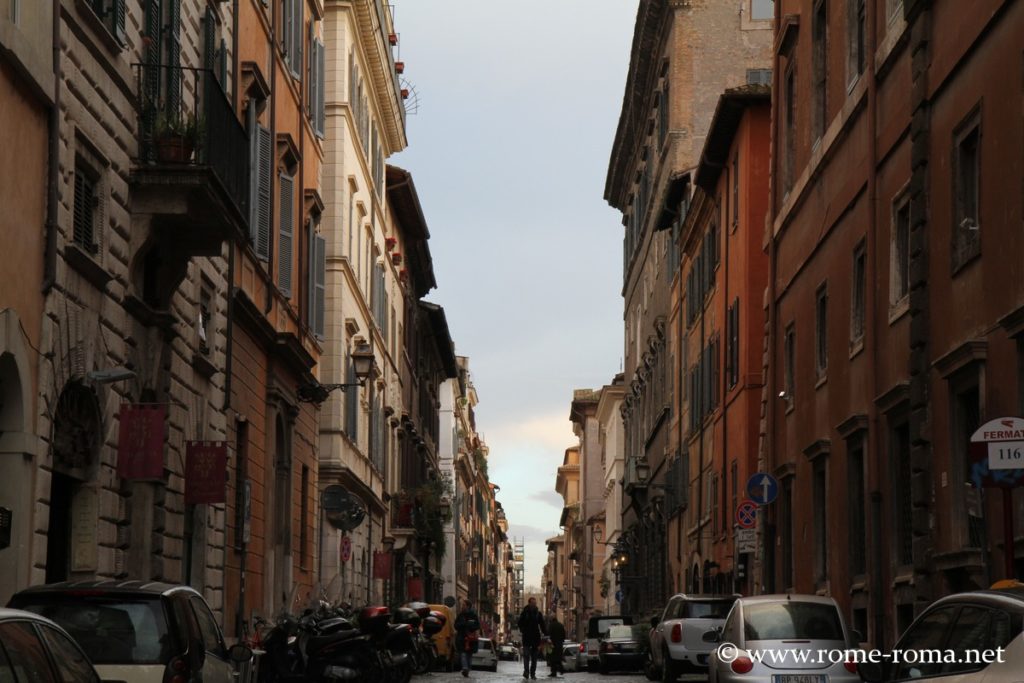
Map of the Sites along Via Giulia
If you see this after your page is loaded completely, leafletJS files are missing.
The Route of Via Giulia
Near Ponte Sisto, at number 251, the Palazzo Pateras Pescara was built in 1924 by Marcello Piacentini. It houses the Consulate of France in Rome.
Mascherone Fountain
The Fontana del Mascherone (fountain of the mask) faces the street leading to Piazza Farnese. It was built at the beginning of the 17th century, after the inauguration of the new Acqua Paola aqueduct by Pope Paul V, financed by the Farnese family as a public fountain, perhaps the work of Carlo Rainaldi.
It was moved during the works on the Tiber’s embankment.
Its porphyry basin probably comes from ancient Roman baths. Behind it, the marble façade has at its center a large Roman white marble mask, from whose mouth the water flows.
In 1720, during a celebration, wine flowed from the mask for three days.
Farnese Arch
Palazzo Farnese, which houses the French Embassy, is preceded by a garden hidden behind the wall along Via Giulia. The façade was created by Vignola and Giacomo della Porta.
The street is crossed by the Farnese Arch, part of Michelangelo’s project to link Palazzo Farnese to Villa Farnese by means of a private bridge, a project later abandoned. The arch functioned as a loggia for festivities.
The arch connected the Palazzetto Farnese, a small palace built in 1603. It was later modified and the garden destroyed.
Church of Santa Maria dell’Orazione e Morte
Immediately after the Farnese Arch, this 16th-century church, built for the Confraternity of Death, charged with burying the unknown, features macabre ornaments and an underground cemetery with decorations in human bones.
Palazzo Falconieri
Adjacent to the previous church, the 16th-century Palazzo Falconieri, expanded in the 17th century by Borromini for Orazio Falconieri. The pillars show busts with falcon heads. Since 1927, seat of the Hungarian Academy.
Palazzo Cisterna and Palazzo Baldoca-Muccioli
At numbers 163 and 167, built by Guglielmo della Porta, Keeper of the Seals of Pope Paul III from 1546, where he lived.
Church of Santa Caterina da Siena
The Church of Santa Caterina da Siena, the church of the Sienese since the 16th century, rebuilt in the 18th by Paolo Posi with a concave façade. Coat of arms of Siena and lunettes with Senio and Aschio.
Palazzo Varese
In front of the church, built in 1618 by Carlo Maderno for Diomede Varese. Transferred in 1788 to the Congregation for the Doctrine of the Faith. Irregular windows, courtyard with porticoes.
Church of Sant’Eligio degli Orefici
Nearby, at 9 Via di Sant’Eligio, the goldsmiths’ church attributed to Raphael in the 16th century. Façade rebuilt in the 18th century after a Tiber flood.
Palazzo of the Spanish College
At number 151, Palazzo di Monserrat built in 1862 by Antonio Sarti and Pietro Camporese for Isabella II. It houses the Center of Ecclesiastical Studies of Spain, connected to Santa Maria in Monserrato.
Church of Santa Maria in Monserrato
From the 16th century, national Spanish church near Via Giulia. Works by Sansovino, Annibale Carracci, bust by Bernini.
Liceo Statale Virgilio
The Collegio Ghislieri, founded in 1630 by Giuseppe Ghislieri, settled in the 1660s in a palace with a façade by Maderno from the 15th century. It hosted 40 young nobles. Inscription on the portal. The Liceo Virgilio includes this palace and a 1936–1939 building by Piacentini.
Palazzo Ricci
In front of the Ghislieri, Palazzo Ricci brings together buildings merged in 1634 and 1684. Façade on Piazza de’ Ricci with faded frescoes by Polidoro da Caravaggio and Maturino da Firenze from the 16th century.
Church of Santo Spirito dei Napoletani
National Neapolitan church since 1574, rebuilt in the 17th century and integrated into the Ghislieri, renovated by Fontana in 1704.
Church of San Filippo Neri
Small 17th-century church founded in 1603 by Rutilio Brandi, dedicated to Saint Trophimus then to Philip Neri in 1728, restored by Raguzzini. Restored again in 1853 by Pius IX after a flood. Silver reliquary saved from the Napoleonic troops. Deconsecrated, restored around 2000. Stucco oval on the portal.
Carceri Nuove
17th-century prisons built by Innocent X Pamphilj as a more humane facility, unlike the Savella Court. Today it houses institutions such as the Anti-Mafia Directorate and a criminal museum (closed).
Palazzo del Gonfalone
Built in 1825–1827 under Leo XII by Joseph Valadier as a juvenile prison. Today, Museum of Criminology (closed).
Oratory of the Gonfalone
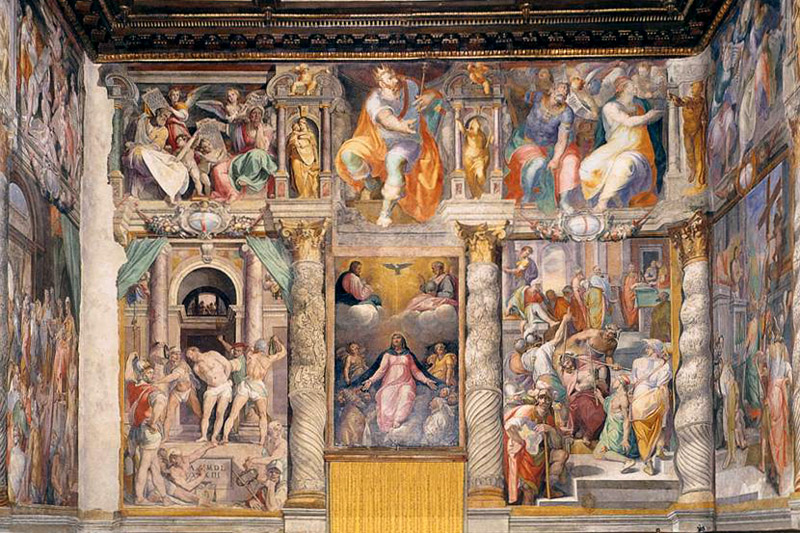
Oratory of the Gonfalone
At 32 Via del Gonfalone, oratory “Sistine Chapel of Mannerism” with 16th-century frescoes by Federico Zuccari, Cesare Nebbia, Livio Agresti. Hosts music events.
Palazzo dei Tribunali
Planned by Julius II with a project by Donato Bramante: quadrangular building with portico and towers. Begun in 1508, interrupted in 1511, abandoned in 1513. Remains of rusticated walls called “sofa of Via Giulia.”
Church of Santa Maria del Suffragio
Built in 1662–1669 by Carlo Rainaldi for the Confraternity of the Suffrage (1592), which prayed for the souls in Purgatory. Travertine façade with pillars and pediment. Interior renewed in 1869: nave, vault, chapels. Altarpiece by Ghezzi (Souls in Purgatory), frescoes by Benaschi, Mariani, Chiari. Oratory with painting by Ghezzi.
Church of San Biagio degli Armeni
Built in 1072, rebuilt in the 18th century, Armenian national church dedicated to Saint Blaise. Bramante’s plans included it in the Tribunals.
Palazzo Sacchetti
Built in the 16th century by Antonio da Sangallo the Younger as a residence. Owners included the Sacchetti family from 1648. Frescoes: Stories of David and Sala dei Mappamondi by Salviati, biblical episodes by Pietro da Cortona. Courtyard with Doric portico.
Palace with the Farnese Coat of Arms
At number 93, perhaps by Guglielmo della Porta, or for Cardinal Duranti. Under Paul III, Farnese coats of arms were added: in the center Paul III, on the left Alessandro, on the right Ottavio or Pierluigi.
Palazzo Medici Clarelli
At number 79, built around 1535 by Antonio da Sangallo the Younger, for Migliore Cresci from 1546. Hosted the Tuscan consulate, then the Marini Clarelli family, later barracks, municipal offices from 1870. Rusticated façade with Latin inscriptions. 16th-century Cresci frescoes erased in the 19th century. Courtyard with closed exedra, fountain with lion.
House of Raphael
At number 85, House of Raphael built after 1525 by l’Ambrogino for the Vatican Chapter. Erroneous inscription: Raphael’s residence, though he died before its construction. Elegant rusticated cladding.
Fiorentini Quarter
Florentines settled here since the Middle Ages. Fifteenth-century buildings such as the Casa dei Fiorentini at number 82 and on Piazza dell’Oro, entrusted by the Medici popes Leo X and Clement VII. Florentine Consulate from 1515 to 1888 on Via del Consolato. Facade painted by Gasparino. Plaque at number 19 of Via dei Cimatori with the lily of Florence.
San Giovanni dei Fiorentini
Florentine church, majestic, built in 1519 by Leo X for the community. Completed over 200 years by Giacomo della Porta, Carlo Maderno, Francesco Borromini. Tombs of the latter two.
Dedicated pages of buildings in Via Giulia

Ancient views in art
Map and address
Address : Via Giulia, 00186 RomeIf you see this after your page is loaded completely, leafletJS files are missing.
Information
| Via Giulia 00186 Rome |
Sources and links for further information |

